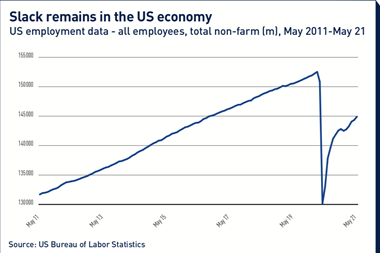Institutional investors rely mainly on active management for their fixed income strategies, but are preparing to increase their allocations to index strategies in the asset class, according to a survey by State Street Global Advisors (SSGA).
In May, the asset manager surveyed more than 350 institutional investors across Europe, North America, and Australia, with the vast majority (82%) being pension funds.
Two-thirds of global respondents said they were prioritising increased use of indexing for broad or liquid core fixed income exposures over the next three years. Slightly fewer respondents (63%) indicated they planned to up indexing for less liquid, non-core/satellite fixed income exposures over the next three years.
With regard to the intentions for broad or liquid core fixed income, European investors appear to be less intent on increasing the use of indexing than their peers in Australia and North America, where the percentage was 82% and 71%, respectively.
More than 76% of global respondents have less than 30% of their fixed income portfolio allocated to index strategies.
“The combination of low current adoption rates and very high expectations for near-term future adoption suggests that FI indexing may indeed be approaching an inflection point,” the asset manager wrote.
“The core/satellite approach in fixed income may also be helping to drive this forward-looking level of acceptance.”
The survey findings also indicated that exchange-traded funds (ETFs) are becoming an important fund vehicle for fixed income portfolio construction. More than 71% of respondents said they have a strong appetite to increase the use of ETFs within their global aggregate/core fixed income portfolios in the next three years.
Respondents most often cited ‘lowering costs/improved efficiency’ as a primary motivation for increasing the use of index strategies in fixed income, closely followed by the desire to use efficient and reliable indexed exposures to maximise the impact of asset-allocation decisions.
“The findings of our research validated trends we’ve observed playing out among institutional investors recently,” said Gaurav Mallik, chief portfolio strategist at SSGA.
“In the search for yield, institutional investors are shifting their portfolios to incorporate fixed income at a lower cost, and accompanying that shift is a focus on yield, liquidity and transparency.”
More China, ESG
The survey also sought insights about fixed income investors’ approaches to China and emerging markets investing, and environmental, social and governance (ESG) considerations.
China has already been added to the Bloomberg Barclays Global Aggregate Index, but in October this year Chinese sovereign bonds will be added to the FTSE WGBI.
S&P Global recently put the size of the Chinese bond market at $9.4trn, taking into account all domestic bonds of a tenor of one year or more that were outstanding as of February this year.
According to SSGA, more than a quarter (27%) of survey respondents are prioritising development of a dedicated/standalone fixed income exposure for China over the next three years.
Respondents from organisations with the highest assets under management are more likely to be developing such an allocation than firms with the lowest assets under management, SSGA said.
On ESG, the survey indicated that, globally, high yield and investment grade corporate bonds are the segments where investors are most planning to prioritise for deeper/more comprehensive ESG integration.
Among North American respondents, developed market sovereign bonds was most likely to be prioritised, while among European respondents high yield was most likely to be the focus.
The survey respondents were limited to senior leaders and senior portfolio managers who are directly involved in fixed income portfolio construction and investment decisions at pension funds, wealth managers, asset managers, and sovereign wealth funds.


























No comments yet